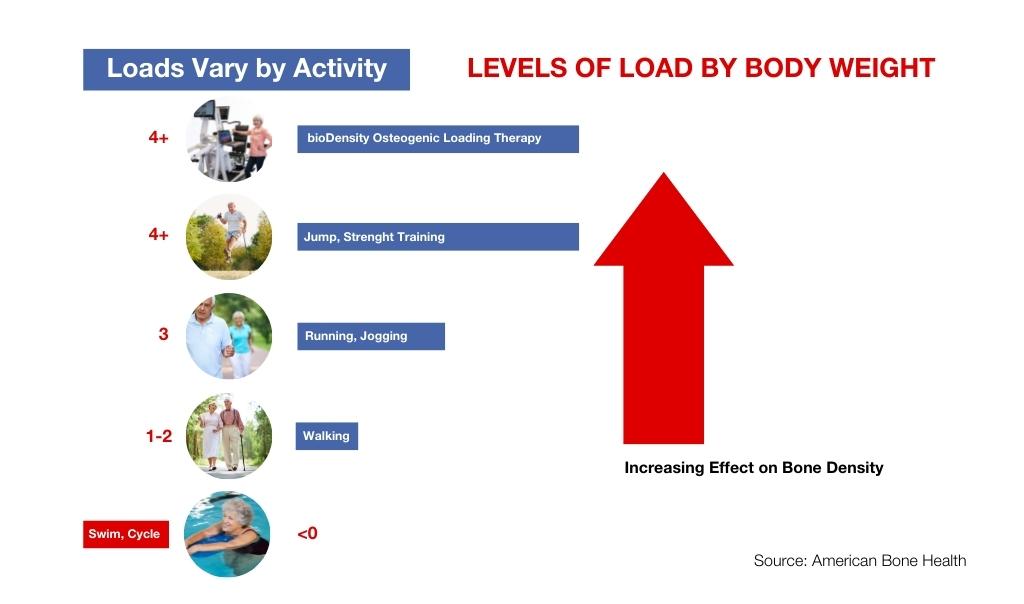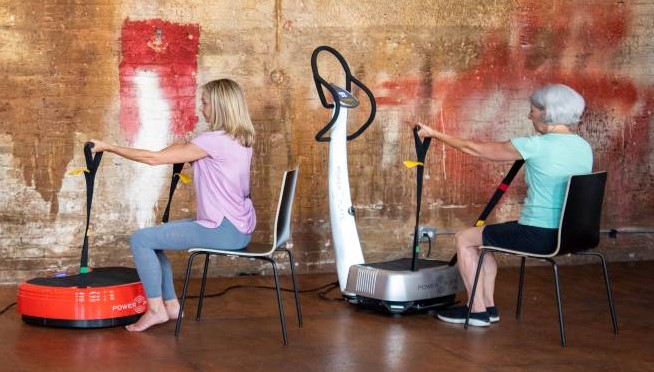Build Bone Density During Menopause
You’ve heard it before – your estrogen levels drop during menopause. It is usually associated with what you can see and feel, such as no longer having your period, mood swings, or hot flashes. Low estrogen levels can lead to a number of metabolic bone diseases, such as osteoporosis or fractures, which many women are unaware of. During perimenopause, calcium levels decrease by approximately 200mg daily for 3-4 years. Women usually lose 10% of their bone density in the 5 to 7 years following menopause. Women are losing bone more rapidly than men, perhaps as much as 10 to 20%. There is a persistent loss of calcium each year during postmenopause, and the daily calcium loss averages 45mg per day. One in two women will break a bone due to osteoporosis. Fractures are more common in Caucasian, Arab and Asian women than in African women. There are things you can do to maintain and even build bone density during your menopausal years. Preventing fractures is not the only reason for doing so. Strong bones allow you to be more active, more independent, and more free as you age. Osteogenic loading is a technique that can naturally increase bone density during menopause. You might not believe it, but medicine balls combined with whole body vibration are excellent to build up bones and strength!
What is Osteogenic Loading?
During osteogenic loading, you exercise with weight-bearing activities to stimulate bone-building cells, ultimately increasing bone density. Despite the health benefits of less intense exercises, such as swimming or walking, osteogenic loading directly increases bone density because it compresses the bone matrix necessary to stimulate these cells in a way that lighter exercises cannot. It is important to pass a certain threshold of weight loading that is greater than your daily activities for the stress on the bones to effectively elicit the bone remodeling process. Yes, your body weight must be 4 TIMES the load! With bioDensity High-Advanced Low-Impact exercise-bases therapy this is possible! (phew!).

How to Replace Damaged or Old Bones with New Ones?
Fortunately, with bioDensity Osteogenic Loading Training Therapy it is possible to replace old or damaged bones with new bones! Your body makes new bone in five phases:
- Activation: On the surface of the bone, osteoclasts are recruited. Osteoclasts are large bone cells that absorb bone tissue during growth and healing.
- Resorption: The osteoclasts create an acidic microenvironment between the cell and the bone surface, causing the mineral content to dissolve or resorb.
- Reversal: Apoptosis occurs in osteoclasts, which are recruited to the bone surface. An organism’s growth or development is controlled by apoptosis, a process in which the cells die as part of normal and controlled processes.
- Formation: The collagen that osteoclasts deposit is mineralized to form new bone.
- Termination: The process ends when an equal amount of bone has been replaced.
To activate bone-building cells, you need to add resistance/weight training and increase bodyweight exercises but what if you can’t? bioDensity osteogenic loading therapy can reverse osteoporosis, however it is more effective in preventing brittle bones. The sooner you start, the better!
Which Exercises Promote Osteogenic Loading?
When it comes to osteogenic loading, there are different levels, just as there are in fitness. Increased load leads to greater bone density! A brisk walk is the first level, but keep in mind that walking has little or no effect on preventing bone loss. The next levels are running or jogging and strength training and exercises that incorporate jumping are included, similar to high-intensity interval training. At the final level is bioDensity, High-Advanced Low-Impact osteogenic loading, low-impact as in low stress on the joints and ligaments. If you enjoy swimming or cycling, we have some bad news for you. They are good cardiovascular exercises, but they partially “unload” the bones. Adding strength training or once weekly bioDensity osteogenic loading sessions to your swim or cycle workout is crucial.

Does Osteogenic Loading Increase Bone Density?
No matter what, stay active! Get 30-60 minutes of osteogenic loading exercises most days equal to 1 bioDensity session of ten minutes, once weekly.
If it's been a while since you last exercised:
- Walk uphill for 15 minutes, then increase the time until you reach 30-45 minutes.
- Increase the impact by doing 1 minute of standing marches or jumping jacks at the end.
- Or/and 1 bioDensity session of 10 minutes weekly.
If you Exercise for 30-60 Minutes 1-2 Times per Week:
- Start by incorporating walking up and down stairs 5 – 10 times into your exercise routine.
- Then add another workout until you are exercising 4-5 times per week at this intensity.
- Or/and 1 bioDensity session of 10 minutes weekly.
If you Exercise for 30-60 Minutes 4-5 Times per Week:
- Start by adding resistance exercises to target the major muscle groups attached to the hip and spine. Research has consistently shown that resistance exercises deliver the amount of strain necessary to increase bone growth. Resistance exercises involve whole body vibration exercises, free weights, weight machines, medicine balls, elastic bands, and varying movement speeds. Pilates and yoga enthusiasts will also appreciate planks, warrior variations, and side bridges.
- Then increase the intensity. Studies suggest doing at least two sets of each major muscle group with 8 to 12 repetitions. Add 8-12 repetitions of resistance band back rows to your regular jump squats, for example on the Power Plate.
- Studies show resistance exercises consistently provide the magnitude of strain needed to promote bone growth. Resistance exercises can be done on the Power Plate with or without free weights, medicine balls, elastic bands. Pilates and yoga lovers will also appreciate planks, warrior variations, and side bridge qualify too on the Power Plate.
- Then continue to increase the intensity. In studies, it is recommended to perform two sets of each exercise with 8 to 12 repetitions for each major muscle group. To your regular jump squats, add 8-12 repetitions of resistance band back rows on the Power Plate.
- Or/and 1 bioDensity session of 10 minutes weekly.

How Can You get Started?
Make a plan that you can stick to. The Power Plate My7 personal trainer can help you stay motivated and give you a little guidance if you need it. An Osteogenic Loading Plan must include the following three components:
1. Accountability
The goal of increasing bone density is one of your stepping stones to success, but maintaining your efforts will help you actively prevent bone fractures and osteoporosis. A plan ensures consistency. Having a plan guarantees consistency. Try adjusting your perspective: Comparing a one-time goal of, “I want to lose 10 kg,” with an ongoing goal of “I want to maintain my bone density,” is like comparing a dance recital with a yoga practice. To prepare for a dance recital, you drill, drill, drill the same choreography. Dance recitals come and go. Yoga is practiced 2-5 times per week, makes use of a variety of moves, and is both mentally and physically rejuvenating.
2. Progression
Let’s compare a yoga practice with a dance recital. You Google a dance routine and practice it over and over again. Being consistent is good, but repeating the same exercises can become monotonous. Redundancy leads to boredom, which leads to frustration and a lack of motivation. Since you are not increasing the intensity when necessary, this approach often results in plateauing. Power Plate whole body vibration workout and bioDensity Osteogenic Loading are two ways to progress when necessary while eliminating redundancy.
3. Safe & Effective
Therefore, you’re motivated, armed with an enjoyable exercise routine, and ready to kick it up a notch. With a fitness plan and fitness trainer, you can avoid injuries while still seeing progress and earning a sense of accomplishment.
Make osteogenic loading a part of your fitness routine and your bones will remain strong and fracture-free for decades to come.
STAY TUNED for more Blogs on Preventing and Maintaining Bone Loss during Menopause!

